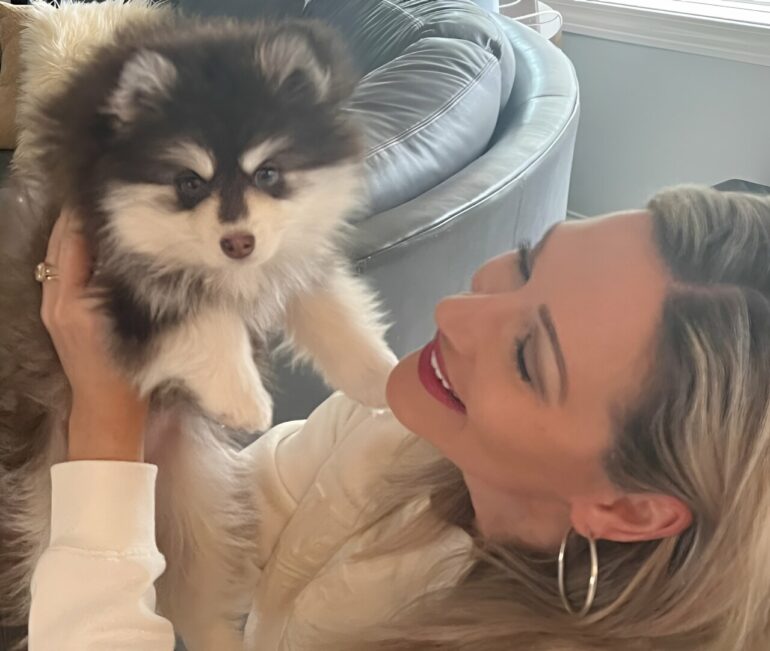Language researchers have studied how mothers speak to their infants, to their pets, and to other adults. Mothers speak slowly and clearly to their infants, hyperarticulating speech to teach language. What this research did not examine was the positive valence, or emotion of a mother’s speech.
Robin Panneton, professor in the Virginia Tech Department of Psychology and affiliated faculty member with the Child Study Center, provides this missing factor in a study published in the Journal of Child Language that examined how mothers speak to their infant and to puppies.
“There’s no reason for you to be speaking clearly to a puppy because you’re hoping that puppy learns English. So if you speak more clearly to a puppy, something else is happening,” said Panneton, a faculty member in the College of Science. “What [previous studies] found is that you actually raised your pitch and slowed down a little bit when you speak to your dog or your cat, but you don’t hyperarticulate or speak more clearly. But vocal emotion was also less to pets. We had to somehow get more vocal emotion in the mothers’ speech to dogs, and we were able to do that.”
The research process
Mothers brought their 6-month-old infants into the lab. The infants were placed in a little seat, and mothers were asked to talk to infants using three objects: a boot, a ball, and a bead. Then the infants were removed, and a puppy was placed in the same seat. Mothers were asked to again speak using three objects: a boot, ball, and bead. Then the puppy was removed, and mothers spoke to an undergraduate student incorporating the same three words.
“The order was randomized. Sometimes the student would be first and the puppy last, so the order is irrelevant. What we’re trying to say is, if you are more emotional in your voice when you speak to a puppy than to your own animal in the house, what does that do to your hyperarticulation? It elevated it, so when we did our emotion analysis, they were equal across the baby and the puppy. That is, the speech to the baby is rated just as positive in emotion as the speech to the puppy,” said Panneton. But both baby and puppy speech were higher in emotion than speech to adults.
This “happy talk” connection has implications for future research in language development and for how we support mothers who may not be able to speak as positively to their infants.
Future implications
Previous studies indicate mothers speak more clearly to infants because they view themselves as a teacher that knows their child is going to learn language from them. Panneton adds that in addition to being a teacher, “there might be other important factors that influence her speech clarity.”
Emotion must be considered when looking at the data.
“If you compare a woman who is 35 having her first baby to a woman who’s 16 and having her first baby, they might be very different in their view of themselves as the teacher. You have to address that difference because not all moms speak clearly to their infants,” said Panneton. “If you open the interpretation to include emotion, now you can explain the data better. Rather than saying, ‘There’s just some bad teachers out there,’ it’s also a question of how the mother is feeling.”
Mothers suffering from postpartum depression are one group that Panneton said could benefit from additional support in this area as well as mothers who manage the daily stress of working multiple jobs.
“I think we have to really be sensitive to all the challenges that mothers face and know that there is variability. If that variability in any way compromises the way their kids are learning language, then we have to support them.”
More information:
Robin Panneton et al, Positive Valence Contributes to Hyperarticulation in Maternal Speech to Infants and Puppies, Journal of Child Language (2023). DOI: 10.1017/S0305000923000296
Citation:
Incorporating puppies into language research adds new insight (2023, October 12)



